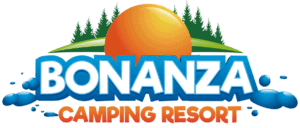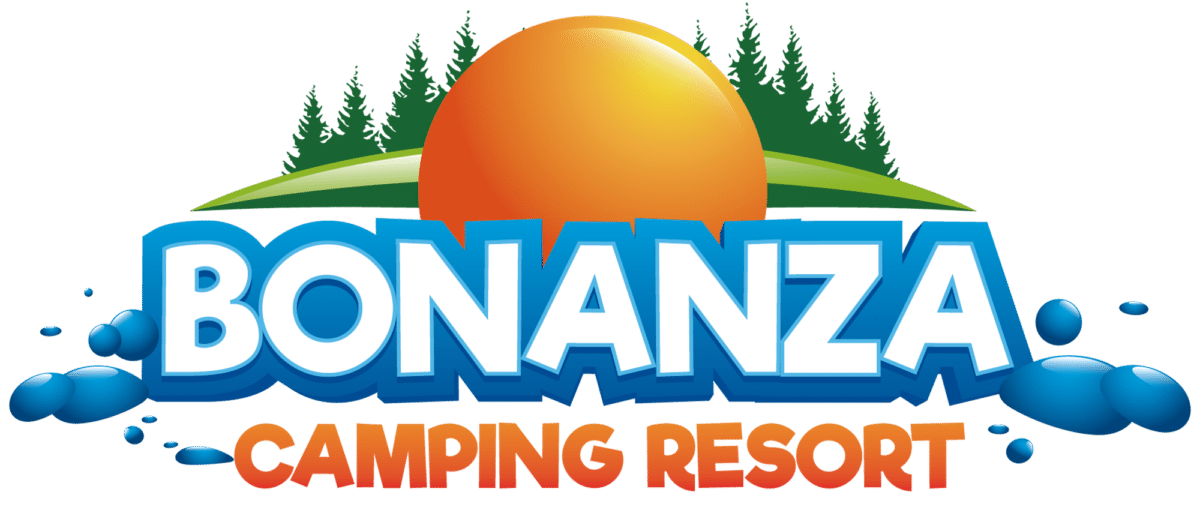Step off your campsite pad and into 1872: the very woodland path where German botanist Cajetan Spiess pressed Dutchman’s breeches now waits just beyond Bonanza’s welcome sign. The sandstone still glows, monarchs still drift over lupine, and—best of all—your kids, camera, or field journal can follow his three-mile loop in a single morning.
Key Takeaways
– Spiess Loop is a 2.8-mile, 90-minute walk that starts at the Bonanza Camp Store in Wisconsin Dells.
– You follow the same path German botanist Cajetan Spiess used in 1872 to collect over 230 plant species.
– The trail is mostly flat and stroller-friendly; benches appear every 400 feet.
– Four main stops: riverbank cottonwoods, sandstone ledges, mixed-oak woods, and an open prairie full of butterflies.
– Kids can use scavenger cards, a Junior Ranger checklist, and free Borrow-a-Press kits to press leaves.
– QR codes, plant-ID apps, and iNaturalist uploads blend old-school botany with modern tech.
– Conservation rules: stay on the path, brush your boots, keep voices low, and pack out trash.
– Each season offers new sights—spring wildflowers, summer monarchs, fall colors, and winter bark games.
– A shuttle cart helps visitors who can’t do the climb; a .7-mile spur adds river views for hikers and cyclists.
– Free resources online and at the camp store include maps, Spiess’s original notes, plant lists, and lesson plans.
Ready to swap screen time for green time? Scroll on for a stroller-friendly trail map, Kid Tip scavenger cards, #DellsBotanyThrowback photo spots, and the quick link to Spiess’s original notes. Past and present are blooming side by side—let’s go see what survives.
Trailhead – Who Was Cajetan Spiess & Why the Dells?
Cajetan Spiess was a German-born botanist whose meticulous fieldwork helped the young United States map its natural riches. In 1872 he arrived in the sandstone gorges of the Wisconsin Dells, collecting, pressing, and labeling more than 230 species in just eight weeks, a pace that equals one new plant every five hours. His letters, now archived at the Smithsonian letters, reveal a scientist amazed by prairie orchids floating above sandy soils and riverbank vines twisting into cottonwoods.
Quick Fact for history buffs: Spiess had recently collaborated with the U.S. Geological Survey, and his Dells expedition fit neatly into the era’s grand push to document North America’s flora, a context you can explore further in the USGS bio. For today’s camper, the payoff is practical—his notes read like GPS coordinates in paragraph form, making it surprisingly easy to retrace his route from Bonanza’s front gate. Their precise descriptions still guide modern botanists on citizen-science outings.
Map Your Own Mini-Survey – The Spiess Loop (2.8 miles, 90 minutes)
Start and finish at the Bonanza Camp Store (43.5898° N, 89.7789° W) where laminated trail maps wait just inside the door. Follow the blue tent icons painted on low posts; they lead you along the Wisconsin River, up a short sandstone bluff, through a mixed-oak canopy, and back across an open prairie buzzing with swallowtails. Families will appreciate that the path stays under a gentle three-percent grade until the woodland section, and even there a bench appears every 400 feet.
Kid Tip: the first half-mile is stroller-smooth crushed limestone; if wheels are your priority, take the prairie bypass at marker three and rejoin the loop near the butterfly-weed patch. Adventure Couple add-on: a signed spur veers left after the sandstone ledges, adding 0.7 miles and a cliff-side selfie with sweeping river views. Cyclists can roll it, hikers can jog it, and photographers catch golden light there before 10 a.m.
Waypoint 1 – Riverbank Cottonwoods
Spiess opened his notebook beside towering silver maples whose roots grip the riverbank like octopus arms. Look up for bald-eagle nests and down for riverbank grape twisting through jewelweed—two species he listed on page one of the survey. Today, Bonanza has installed a subtle boot-brush to keep invasive seeds from hopping trail to boat launch, a nod to conservation practices he could only have imagined.
Homeschool hands-on option: pack two crayons and a square of newsprint, then let kids slip the page over a cottonwood leaf and rub gently until the vein pattern appears. They can tag their rubbing with the date, just as Spiess tagged pressed leaves in 1872, and slide it safely into a field journal before moving on. The simple activity cements botanical terminology such as “midrib” and “venation” in young minds.
Waypoint 2 – Sandstone Ledges
A ten-minute climb ushers you onto caramel-colored rock that still bears ripple marks from an ancient sea. Tucked in shaded crevices is cliff brake fern, a photo-worthy rarity whose Latin name—Pellaea atropurpurea—sounds even more mysterious. Early light between nine and ten amplifies the ledges’ warm tones, so #InstaHint: arrive before the sun climbs high.
Safety first; the bluff edge is fenced, and loose shale can roll under shoes. Stay behind the rail and point your lens north where the river snakes through pine-crowned cliffs, a view virtually unchanged since Spiess penciled a sketch in his field book. Interpretive signs illustrate that original sketch, inviting visitors to compare past and present.
Waypoint 3 – Mixed-Oak Woodland
The trail cools under a canopy of white and red oak, and spring visitors find the soil carpeted with Dutchman’s breeches, bloodroot, and hepatica before the trees leaf out fully. In autumn, scarlet sumac spears up between trunks, and big bluestem along the sunny pockets turns a burnished bronze. A grid on the waypoint post breaks down what to spot in each season, so you know whether to hunt for ephemerals or photograph bark patterns.
Junior Ranger Spotting Checklist lives on the same sign: five kid-level finds such as acorn caps and squirrel leaf nests, plus a bonus animal track to keep interest high. Retired hikers will be glad to see the gentle slope remains at three percent, with that reliable bench spacing offering a breather or a place to jot notes. Birders often linger here, scanning the mid-story for red-eyed vireos and wood thrushes.
Waypoint 4 – Prairie Opening & Loop Return
Step from shade into sun and you’re suddenly in a sand-plain prairie where butterfly weed blazes orange and wild lupine beckons monarchs. Bonanza’s maintenance crew burns this opening lightly each spring to mimic natural fire cycles, keeping shrubs at bay and pollinator habitat thriving—a modern echo of Spiess’s observation that fire maintains prairie diversity. The fragrance of warm pine and sweet clover lingers on the breeze, making this a favored picnic spot.
Scan the small post near the loop junction for a QR code that uploads your plant photo straight to iNaturalist, adding to a live database the campground streams on a lobby monitor. Before you head back to camp, swipe soles on the boot brush, refill bottles at the water station, and glance at the Leave No Trace panel reminding visitors why silence protects ground-nesting birds. A quick stretch here lets muscles cool down before the final half-mile to the camp store.
Four Seasons of Dells Flora at a Glance
Spring rewards early risers with Dutchman’s breeches, bloodroot, and trillium flowering for mere weeks; the phenology calendar at check-in helps you time a visit to this brief ballet. Summer turns the prairie into a neon display—butterfly weed, wild lupine, and sand coreopsis pull in monarchs, swallowtails, and every photographer within earshot. Humidity can climb in July, so plan dawn walks for cooler temps and saturated colors.
Fall paints big bluestem bronze and goldenrods gold while sumac torches the ledges red; combine that with crisp air and you have peak hiking comfort. Winter doesn’t shut the book; evergreen clubmosses trace emerald mini-forests on the forest floor, and bark-ID games sharpen eyes when leaves lie buried. Snowshoers can still follow the blue tent icons, discovering animal tracks that reveal unseen nocturnal traffic.
Make It Hands-On – Family & Group Activities
Borrow-a-Press kits rest in a labeled bin by the camp store’s front door; inside you’ll find cardboard, newsprint, and rubber bands ready for field-fresh petals. Families sign out a kit, gather non-protected leaves or blossoms, and create herbarium sheets to dry back at camp—no extra fee, just a reminder to return the kit before checkout. The finished sheets make scrapbook-ready souvenirs and reinforce plant anatomy lessons.
Every Saturday at 10 a.m., staff host a 30-minute Junior Botanist session under the shaded pavilion. Kids learn Spiess’s labeling shorthand, invent their own specimen tags, and proudly clip them to the press they’ll bring home. For homeschool leaders, the campground provides an objective-materials-steps outline that merges iNaturalist uploads with a quick bar chart comparing 1872 abundance to today’s crowd-sourced data.
Tech & Trivia – 1872 Science Meets 2024 Apps
Your phone can act as a portable herbarium: snap a leaf, open a free plant-ID app, and cross-check the suggestion with Spiess’s quote printed on the nearest waypoint post. If the signal drops, the offline map you downloaded at breakfast keeps GPS pins active, and QR-based audio snippets play a two-minute field note read by a local naturalist. This fusion of analog lore and digital tools elevates every pause on the trail.
Back at camp, a living digital herbarium scrolls across the lobby screen, fed by guests who hashtag images #SpiessLoop or #DellsBotanyThrowback. A quiet-zone charging station nearby lets you top up devices without the hum of conversation—please keep ringtones off so the lobby remains as calm as the woods. Camp hosts note that peak uploads arrive at dusk, so expect a fresh slideshow after dinner.
Respect the Roots – Conservation Etiquette Spiess Would Applaud
Five trailhead reminders anchor Bonanza’s stewardship ethic: pack out trash, stay on beaten paths, observe wildlife from a respectful distance, photograph rare plants instead of plucking them, and keep voices low around nesting birds. Boot-brush stations at habitat transitions knock invasive seeds from soles, and clearly marked recycling bins make it easy to ditch single-use bottles in favor of refills. These small acts ensure the next visitor encounters the same unspoiled scene.
Guests craving hands-on stewardship can join quarterly volunteer days that pull garlic mustard or collect native seed, pairing physical work with naturalist insights. Spiess himself wrote that “the future of American botany lies in the public’s willing hands,” a quotation you can read on the kiosk beside event sign-ups. Participants receive a commemorative patch, inspiring repeat visits and ongoing care.
Plan Your Visit – Logistics from a Bonanza Base Camp
Early birds who want dawn light on the river should pick Sites 14-21; those spots back up to the trail and sit in Bonanza’s quiet loop where generator hours are limited. Families preferring playground proximity can still reach the route in under five minutes by following orange tent icons painted on the campground lane. Both clusters book quickly during peak bloom weeks, so reserve well in advance.
Travelers with mobility considerations will appreciate the shuttle golf cart that leaves from the office on request and idles at the cottonwood waypoint, letting participants skip the climb yet still enjoy riverbank flora. After the hike, two microbreweries—both within a ten-minute drive—pour small-batch ales, and a downtown bakery flashes daily doughnut specials that satisfy kids and endurance runners alike. Check the weather forecast, verify DNR fire restrictions via the posted link, and pack layers; the river can make mornings cooler than a typical Midwestern suburb.
Grab-and-Go Resources
Three free downloads sit on the Bonanza website: a two-page plant-spotting checklist sized for kid backpacks, a PDF scan of Spiess’s 1872 survey stored at the Smithsonian, and a K-8 lesson-plan packet blending history and biology. Physical copies of laminated trail maps and phenology calendars hang on the info board—borrow one, wipe it clean, and slide it back for the next explorer. Links load quickly over campground Wi-Fi, but you can also save them offline before arrival.
A hard-copy binder of Spiess documents rests on the lobby coffee table for tactile browsing during rainy hours. Next to it, a guest notebook invites you to jot personal field notes or sketches, continuing the tradition of collaborative science. Staff rotate a “specimen of the week” display in this corner, so repeat visitors always discover something new.
A century and a half after Spiess’s first step, the story is still unfolding right here at Bonanza—one wildflower, one family photo, one campfire at a time. Reserve your campsite today, pick up your Borrow-a-Press kit at check-in, and trade the hum of screens for the hush of cottonwoods; the loop—and the memory-making north-woods escape you’ve been craving—await just beyond our welcome sign.
Frequently Asked Questions
Q: How long does it really take to walk the Spiess Loop, and can I push a stroller the whole way?
A: Most guests finish the 2.8-mile loop in 90 minutes, photo stops included, and the first 1.3 miles are crushed-limestone smooth for strollers; after that, you can stay on wheels by taking the clearly signed prairie bypass at marker three, rejoining the loop near the butterfly-weed patch without missing any of Spiess’s headline species.
Q: Which months give us the best chance to see the flowers Cajetan Spiess recorded back in 1872?
A: Dutchman’s breeches, bloodroot, and other spring ephemerals peak from mid-April to early May, prairie wildflowers explode June through mid-August, and fiery sumac plus goldenrods color the ledges from late September into early October, so plan around those windows if you want living side-by-side comparisons with the 19th-century notes.
Q: Is there a printable scavenger hunt or plant checklist for kids and homeschool groups?
A: Yes—visit the “Grab-and-Go Resources” section of Bonanza’s website before you arrive or scan the QR code on the camp-store bulletin board to download a two-page Junior Ranger spotting sheet, a K-8 lesson plan, and a blank field-journal template you can stash in any daypack.
Q: I have limited mobility; which parts of the trail or facilities are ADA-friendly?
A: The crushed-limestone riverbank section, the cottonwood waypoint, the pavilion classroom, and the restroom at the camp store all meet ADA grade and width standards, and a complimentary golf-cart shuttle can drop you at the cottonwoods or pick you up at the prairie junction so you can enjoy river scenery without the sandstone climb.
Q: Where can I read or download Spiess’s original 1872 survey documents?
A: A high-resolution PDF scanned from the Smithsonian archives sits one click away on the Bonanza Camping Resort “Downloads” page; Wi-Fi in the lodge is strong enough to pull up the 12-megabyte file, and a hard-copy binder rests on the lobby coffee table for offline browsing.
Q: Are there GPS pins or map files for rare-plant photo spots and historic overlooks?
A: Absolutely—open the free offline map linked in the blog post, and you’ll see pre-loaded pins for the cliff-brake fern ledges, the riverbend overlook, and the lupine prairie; just toggle “Spiess Hotspots” in the layers menu and your phone will buzz when you’re within 50 feet of a marked location, even in low-service zones.
Q: Can we bike or trail-run the route instead of walking?
A: Yes, the crushed-limestone and packed-sand surfaces handle mountain or hybrid bikes and make for a forgiving trail-run, and the optional 0.7-mile spur off the sandstone ledges gives cyclists and runners a little extra cardio plus a sweeping river selfie spot without interfering with foot traffic.
Q: Do you offer guided walks or talks about Spiess and Dells botany?
A: Every Saturday at 10 a.m. a staff naturalist leads a 45-minute interpretive walk that hits the cottonwood bank and sandstone ledges, weaving in Spiess anecdotes and answering plant-ID questions; you can reserve a slot at check-in or simply show up at the pavilion five minutes early.
Q: How reliable is cell service for uploading photos to Instagram or logging finds on iNaturalist?
A: Verizon and UScellular hold two to three bars along most of the loop, AT&T bounces between LTE and 3G near the sandstone bluffs, and free campground Wi-Fi waits back at the lodge if you prefer to batch-upload your #DellsBotanyThrowback shots after the hike.
Q: May I bring my dog, and what trail etiquette should I know?
A: Leashed dogs are welcome as long as leashes stay under six feet, paws remain on the beaten path, and owners carry waste bags to pack out droppings; water bowls and a boot-brush that doubles as a paw-cleaner sit at the trailhead, so furry friends can explore without spreading invasive seeds.
Q: What conservation rules apply to collecting plants or volunteering on restoration projects?
A: Living specimens stay in the ground unless you’re using one of the campground’s Borrow-a-Press kits with staff guidance, photos rather than plucking are the norm for rare species, and anyone itching to get hands-on can sign up at the kiosk for quarterly garlic-mustard pulls or native-seed collections that mirror Spiess’s scientific spirit but serve today’s ecosystem.
Q: Where can we refuel or toast the day after finishing the loop?
A: Two microbreweries and a downtown bakery sit within a ten-minute drive, but many guests simply grab cold drinks at the camp store, then wander back to riverside sites 14-21 for sunset while kids trade plant stickers earned by tagging their first find with #BonanzaBotanist.



